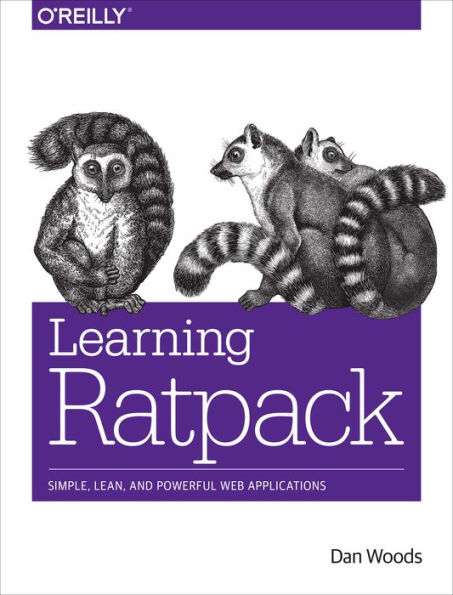Build robust, highly scalable reactive web applications with Ratpack, the lightweight JVM framework. With this practical guide, you’ll discover how asynchronous applications differ from more traditional thread-per-request systems—and how you can reap the benefits of complex non-blocking through an API that makes the effort easy to understand and adopt.
Author Dan Woods—a member of the Ratpack core team—provides a progressively in-depth tour of Ratpack and its capabilities, from basic concepts to tools and strategies to help you construct fast, test-driven applications in a semantic and expressive way. Ideal for Java web developers familiar with Grails or Spring, this book is applicable to all versions of Ratpack 1.x.
- Configure your applications and servers to accommodate the cloud
- Use Ratpack testing structures on both new and legacy applications
- Add advanced capabilities, such as component binding, with modules
- Explore Ratpack’s static content generation and serving mechanisms
- Provide a guaranteed execution order to asynchronous processing
- Model data and the data access layer to build high-performance, data-driven applications
- Work with reactive and functional programming strategies
- Use distribution techniques that support continuous delivery and other deployment tactics
Build robust, highly scalable reactive web applications with Ratpack, the lightweight JVM framework. With this practical guide, you’ll discover how asynchronous applications differ from more traditional thread-per-request systems—and how you can reap the benefits of complex non-blocking through an API that makes the effort easy to understand and adopt.
Author Dan Woods—a member of the Ratpack core team—provides a progressively in-depth tour of Ratpack and its capabilities, from basic concepts to tools and strategies to help you construct fast, test-driven applications in a semantic and expressive way. Ideal for Java web developers familiar with Grails or Spring, this book is applicable to all versions of Ratpack 1.x.
- Configure your applications and servers to accommodate the cloud
- Use Ratpack testing structures on both new and legacy applications
- Add advanced capabilities, such as component binding, with modules
- Explore Ratpack’s static content generation and serving mechanisms
- Provide a guaranteed execution order to asynchronous processing
- Model data and the data access layer to build high-performance, data-driven applications
- Work with reactive and functional programming strategies
- Use distribution techniques that support continuous delivery and other deployment tactics

Learning Ratpack: Simple, Lean, and Powerful Web Applications
368
Learning Ratpack: Simple, Lean, and Powerful Web Applications
368Related collections and offers

Product Details
| ISBN-13: | 9781491921616 |
|---|---|
| Publisher: | O'Reilly Media, Incorporated |
| Publication date: | 06/01/2016 |
| Sold by: | Barnes & Noble |
| Format: | eBook |
| Pages: | 368 |
| File size: | 5 MB |
